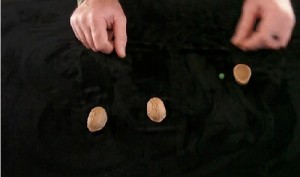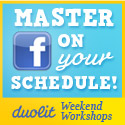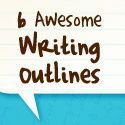The following is a guest post from Allan Douglas and an entry in February’s Self-Publishing Writing Contest. Click here to vote for the winner of this month’s contest. Want to help out your fellow indie authors? Consider entering March’s contest!
 There was a time when publishing a book was pretty straightforward; you had two courses. One: find an agent to represent you, seek a publisher who in turn will produce and promote your book and pay you for the privilege of doing so. Two: take your manuscript to a vanity press and pay them to produce your book so you could promote and sell it yourself.
There was a time when publishing a book was pretty straightforward; you had two courses. One: find an agent to represent you, seek a publisher who in turn will produce and promote your book and pay you for the privilege of doing so. Two: take your manuscript to a vanity press and pay them to produce your book so you could promote and sell it yourself.
Today you still have those choices, but you also have the option of going the route of some form of self-publishing. This choice has been around in the form of vanity presses (they prefer the term “subsidy press”) but that route has always been very expensive. Technology has come to our rescue by making eBooks and Print On Demand (P.O.D.) books available directly to authors. Now we can choose to sidestep the agent, thumb our noses at the publisher and go directly from manuscript to publication, if we want to.
As a result, some agents have decided to embrace the new model by becoming publishers themselves. Some publishing houses are cutting deals directly with successful indie authors. And many new “publishers” are springing up all over the place.
For the author who has been keeping his or her nose to the grindstone… er… I mean the keyboard, and has not taken the time to study the inner workings of self-publication, this array of options may seem bewildering. Where should you start? Who should you trust? It may very well seem like the street vendor who puts a pea under one of three walnut shells, slides them all around, and then says, “OK, where is your path to success?”
D.I.Y.
The first thing you need to know is that producing a standard eBook is simple enough that you can do it yourself. There are no magic spells and no secret insider password is required. You format your manuscript and submit it directly to any or all of KDP.Amazon.com (Kindle), BarnesandNoble.com (Nook) and Smashwords.com. My book, Writing for Profit or Pleasure describes and illustrates these processes in detail. If you can run a blog or format a brochure on your computer, you can format a manuscript for eBook publication. I do recommend that you hire an editor and have cover art produced to give your book its best shot at success. Sloppy work still does not impress anyone.
Amazon’s new enhanced eBook format is more demanding; you will need the ability to code a web page in HTML and CSS to use this format, but it adds many pretty bits that were available only to print books. You may need to hire a designer/coder for this.
Wolves in the Woods
If you choose to focus on your writing and marketing by hiring out the technical stuff, be very careful to seek reliable people. The woods of Publication Land are populated with wolves and skunks who are out to separate you from your hard earned cash. WRITER BEWARE ® is a great resource for avoiding known predators, but you still need to be proactive by checking references on those you are considering. You could start by asking other authors who they have used. Twitter is great for this sort of thing.
Trust only those you know to be reliable. Recommendations from others are a starting point. If you know the author well and trust them, great! If not, check out the recommendation carefully.
When a Press is Not a Press
Because new authors tend to be desperate for publication, receiving an e-mail from a publishing company with an impressive name, offering to produce your book can be thrilling. But before you sign on the dotted line, do two things:
- Check out the company. Not everyone who includes “Press” in their name can print books. More than likely they are an “author assistance service” which will serve as a middleman. This is not necessarily a bad thing; you may be in need of assistance in the form of text editing, manuscript formatting, cover art, and promotional help. But are they capable of doing a good job of it? Is their pricing reasonable? Again, check references; don’t let the thrill of being accepted by a so-called publisher allow them to suck you in. Sometimes keeping an eye on the shell that covers the pea is tough.
- If this service checks out as legitimate and reliable, take the contract to someone with legal expertise – preferably someone with experience with the publishing industry – and have it examined. This will probably cost you a few bucks but it is money well spent, especially if the contract is written in legalese. Know what you’re getting into before you commit; you may be signing away rights you should be keeping or accepting responsibilities you don’t want.
Therefore and Whereby
Even if you choose to self-publish and submit directly to the distributor – Amazon, B&N, and Smashwords are distributors not publishers, you or your “press” would be the publisher – always read the user agreement carefully so you understand the rules. There are some things, especially in the realms of pricing and marketing, that may get you into trouble if you break their rules.
Just one example is that if you choose to put your book into the Kindle Lending Library to get your share of the multi-million dollar fund reserved for that program, you may NOT offer your book anywhere else. If you do they can insist that you repay the royalties received and ban you forever from using the Lending Library for any of your titles. Being an Amazon exclusive may work for you, it may not; you need to weigh that decision for yourself.
Parting Shot
You may opt to grab for the brass ring of Legacy Publishing, you may choose to hire a “small press” and go Indie, or you may elect to self-publish. Whatever you choose, do so with eyes open and mind inquiring. In this endeavor, information is your best friend.
About the Author: Allan Douglas has been an author, writer, and prattler since the 1970’s. Published mostly in magazines but has three books to date. He lives on a mountainside in East Tennessee with his wonderful wife, a genius border collie and a Prima donna hound dog who is queen of the mountain.
 We're
We're 








